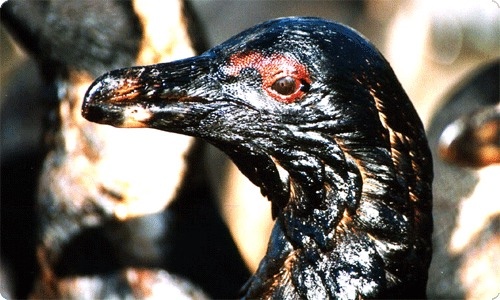
14 Nov Deep threats of drilling the Orange Basin
Climate change, over-fishing and oil-related pollution are collapsing the marine environment off the West Coast. Now there’s the added threat of off-shore oil and gas exploration, reports John Grobler
Spills on Our Shores: To read the full description of each oil spill incident, ‘Swipe to Navigate’ on mobile, click ‘OK’ and scroll down. On desktop, begin by clicking ‘Start Exploring’ and swipe right to navigate through the map’s timeline. Dataviz: Roxanne Joseph

Pushing back: Veteran fisherman Ernest Titus has turned to community activism to try to preserve a way of life threatened by climate change, industrial over-fishing, coastal mining activities and seismic testing by companies looking for oil. Photo: John Grobler
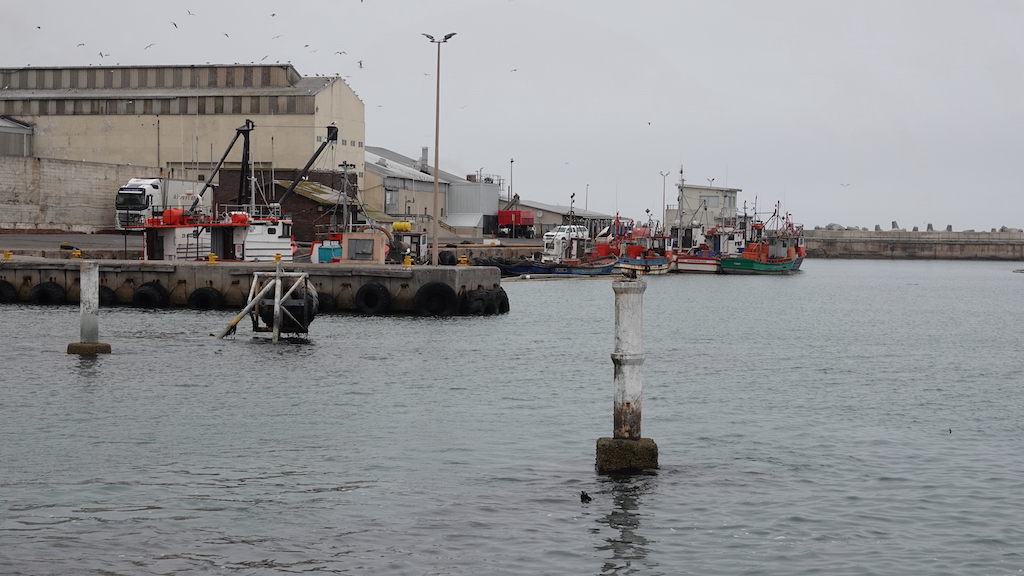
Penguins over people? Lifelong fisherman Ernest Titus said restrictions imposed by the Ministry of Environment, Forestry and Fisheries on local fishing are unfair to him and others, and show more care for animals than the community. Photo: John Grobler
Ernest Titus, a third-generation fisherman from Lambert’s Bay on the West Coast of South Africa, is worried about the long-term impacts of off-shore oil and gas exploration in the Orange Basin on the only natural resource at his community’s disposal.
He recalls when he first became aware of the effects of climate change on the small coastal town, situated about 280km north of Cape Town. In the winter seven years ago, the regular anti-clockwise pattern of the prevailing winds along the West Coast suddenly went hay-wire, he said.
“I saw the change in the sea, changes in the winds and current that I had not ever seen before in my lifetime of more than 50 years at sea,” he recalled. “The wind here always came from the south-east, then in winter months it changed to the north before it turned west to south-south-east again.
“But that year the wind suddenly just changed straight to the west, we had no north wind that brings the fish closer inshore.”
Ever since, he said, the patterns have remained erratic as winds and currents kept shifting in unpredictable patterns that were drastically affecting the behaviour of the fish. For the hundreds of small fishermen along the West Coast and Namaqualand’s north-western coastline, this was a disaster as catches dropped from up to 600 fish per small boat to fewer than 60 fish per fishing trip.
A 2023 change in how quotas were allocated to specific coastal communities and a relentless rise in costs meant that where small quota holders like himself used to earn up to R400,000 per season, they are now lucky to make R40,000, he said. He enumerated the primary causes on his work-scarred fingers: over-fishing, too much coastal mining, and climate change that made the fish move away.
“And a minister who cares more about penguins than people,” he grumbled, referring to restrictions imposed by the Ministry of Environment, Forestry and Fisheries on local fishing in areas close to African penguin breeding colonies.
Titus said the noise of seismic testing by companies looking for oil, even if conducted far out at sea, would have a far worse permanent effect on the fish than even climate change, in his view. “We know from experience that just the underwater noise of using fish-locating sonar makes the snoek immediately flee the area,” he said.
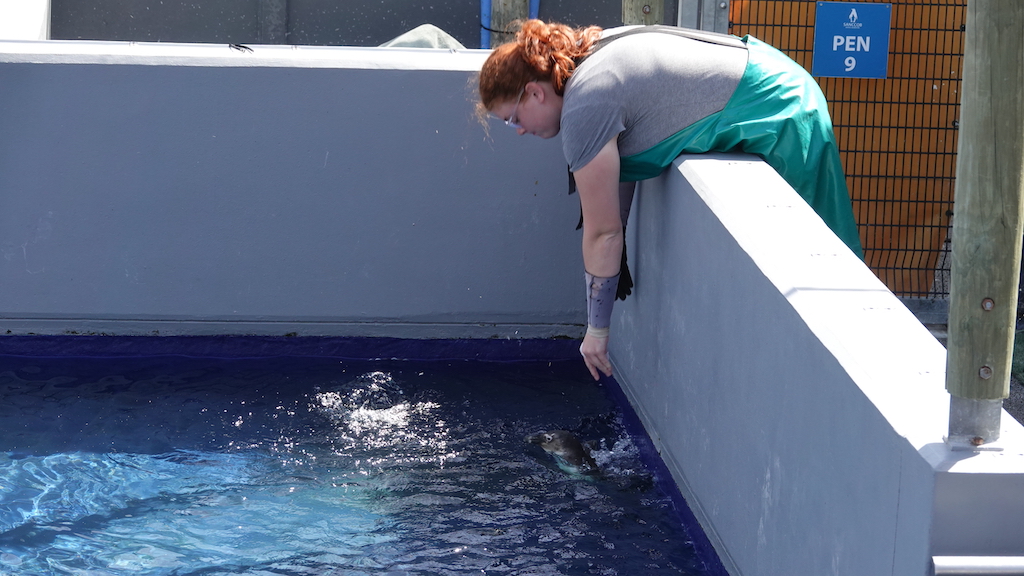
Going, going, nearly gone: SANCCOB says that since the MV Treasure oil spill of June 23 2000, the African penguin population has crashed by 90% and it is feared they will become extinct by 2035. Photo: John Grobler
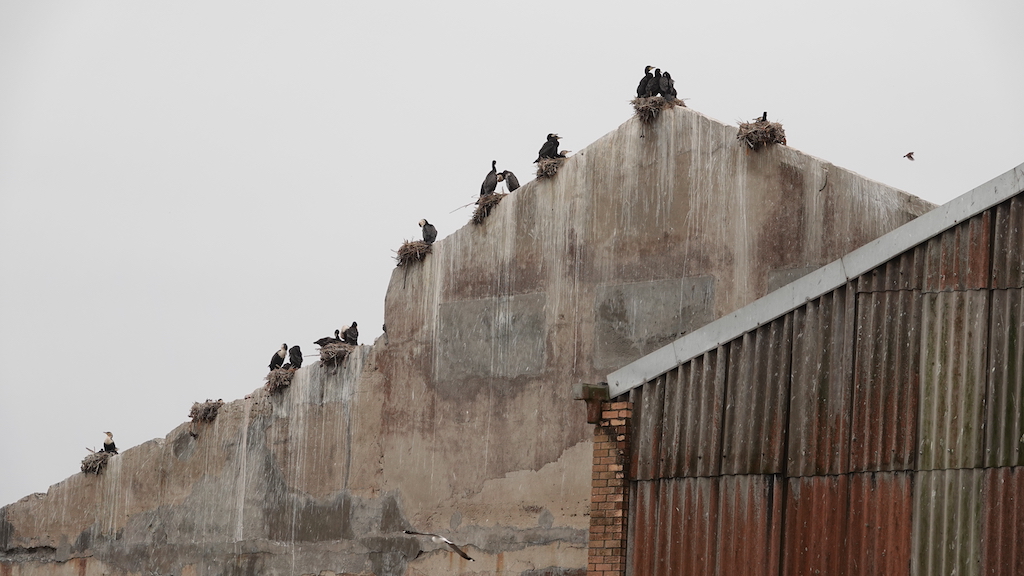
Vanishing legacy: The once-plentiful Bank cormorants and Cape gannet populations have been in a similar if less precipitous decline of 60% to 70% as their main food source of sardines and anchovy has also disappeared over the past 20 years. Photo: John Grobler
Oil spills
In February 2025 a north wind storm along the West Coast blew in an oil slick, believed to have leaked from the wreck of the MV Ultra Galaxy. The Panama-flagged freighter broke up and sank just off Doringbaai on July 8 2024 in another such storm.
Of 512 tons of fuel and oil on board the ship, only eight tons could be removed by the South African Maritime Safety Authority (SAMSA) and oil spill clean-up specialist company Spill-Tech before the raptured tanks saw 40km of the coastline covered in heavy, suffocating oil slicks.
The MV Ultra Galaxy spill, though the largest at 504 tons, was not the worst environmental disaster on record. According to the Southern African Foundation for the Conservation of Coastal Birds (SANCCOB), that dubious honour lay with the MV Treasure, a Chinese ore-freighter that broke up 10km off the Cape of Good Hope in a heavy storm on June 23 2002.
The 400 tons of heavy fuel that washed up along the Cape Peninsula, among other areas, oiled more than 19,000 African penguins, marking the start of what has become a population collapse. From 56,000 breeding pairs in 2001, there were fewer than 8,750 pairs left by 2023 – a decline of 84%.
At current trajectory, SANCCOB estimates African penguins in the wild could become extinct by 2035. In May this year, the African penguin was listed as critically endangered by the International Union for the Conservation of Nature (IUCN).
Two other endemic species, the Cape gannet and the bank cormorant, have also been in a serious population decline of greater than 50% over every three generations and are now classified as endangered.
“One of the most noticeable changes that we have seen is an increasing number of emaciation cases (birds being admitted starving), and large-scale abandonments of chicks, particularly of African penguins,” said SANCCOB manager Monica Stassen.
The emaciation cases have been scientifically linked to distributional shifts in prey abundances driven by climate change and overfishing, while mass abandonments have been linked to extreme weather events, she explained. “Each year SANCCOB receives hundreds of African penguin eggs or chicks that have been abandoned due to extreme heat or flooding,” Stassen said.
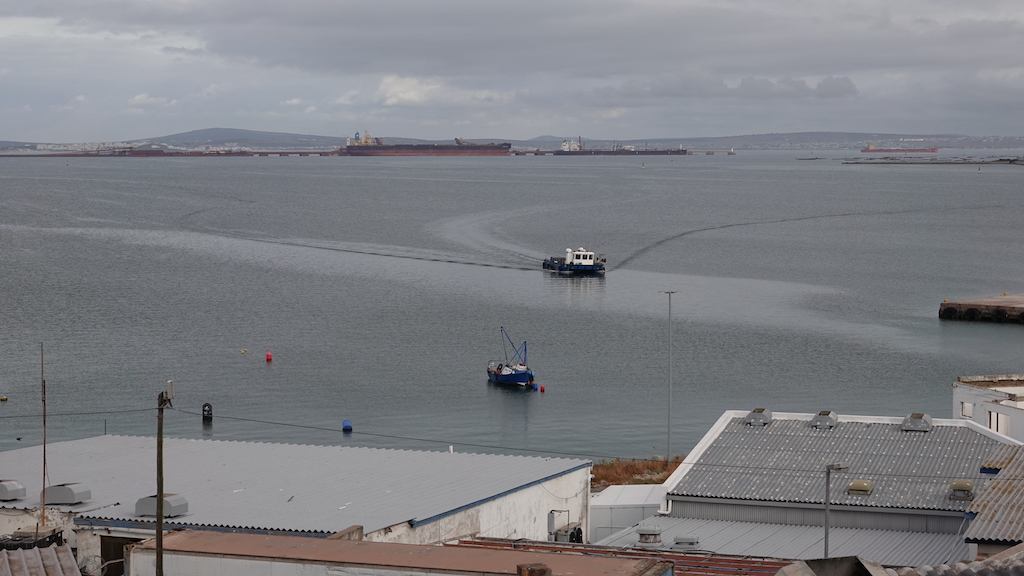
More pipelines and new harbours? The IRP 2025’s plan to increase the use of gas by 50% in SA’s energy mix would require a massive expansion of port infrastructure and the gas pipeline network to meet the 2039 target of 16,000MW of electricity generated by open cycle gas turbine plants. Photo: John Grobler
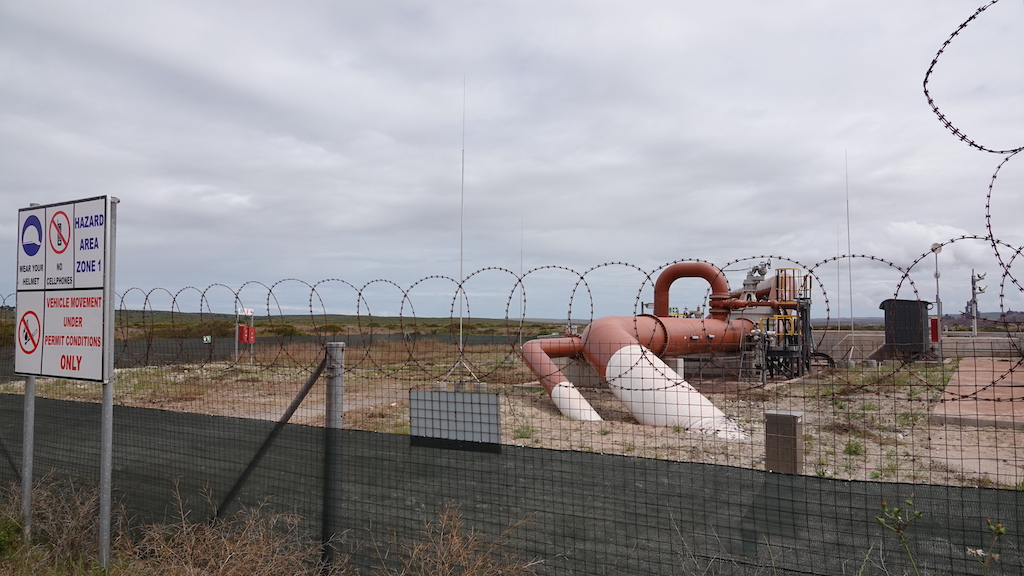
Pipeline problems: Environmentalists are especially concerned about plans for a transfrontier pipeline and transmission line between South Africa and Namibia. Photo: John Grobler
Ship-to-ship bunkering
Although SANCCOB has reported only 32 oil spill incidents since 2000 to date, the actual incidents of oil spills could much higher, especially with the increase in ship-to-ship bunkering and an 80% spike in international marine traffic around the Cape of Good Hope since attacks by Houthi rebels on ships passing through the Red Sea since 2023.
Research indicates that ship owners don’t always report maritime accidents or oil spills in international waters unless forced to declare an international SOS for a vessel in distress.
The main reason is financial: under International Maritime Organisation rules, all major accidents and oil spills have to be investigated formally, which owners of ships sailing under a flag of convenience and the maritime authorities of those countries are loath to do. As a result, only 1% of marine accidents or oil spills in international waters are ever reported.
As for oil spills resulting from off-shore oil exploration such as a deep-sea well blow-out, the situation is further complicated by local bureaucracy.
Neville Noble, manager of the SAMSA office in Saldanha Bay, said the organisation only has jurisdiction over surface spills, while sub-sea activities and structures like well-heads and pipelines fall under the ambit of the Department Mineral Resources and the Ministry of Transport.
While SAMSA is nominally in charge of all marine oil spill clean-up operations, the staff, equipment and vessels they use are supplied and maintained by the oil industry itself, he explained.
Following the disastrous 2010 Deep Horizon blow-out at BP’s ultra-deep well in the Gulf of Mexico, the international oil industry established the Oil Spill Response Limited (OSRL) company that developed specialised technology such as blow-out preventer (BOP) valve-stacks to cap off deep-sea oil wells that spring a leak.
At more than 50 tons and as tall as a two-storey building, these BOPs cost tens of millions of dollars and there are only five in the world, one of which is positioned at Saldanha Bay.
So far there has not been any need for it – but that is no comfort to the Western Cape environmental lobby.
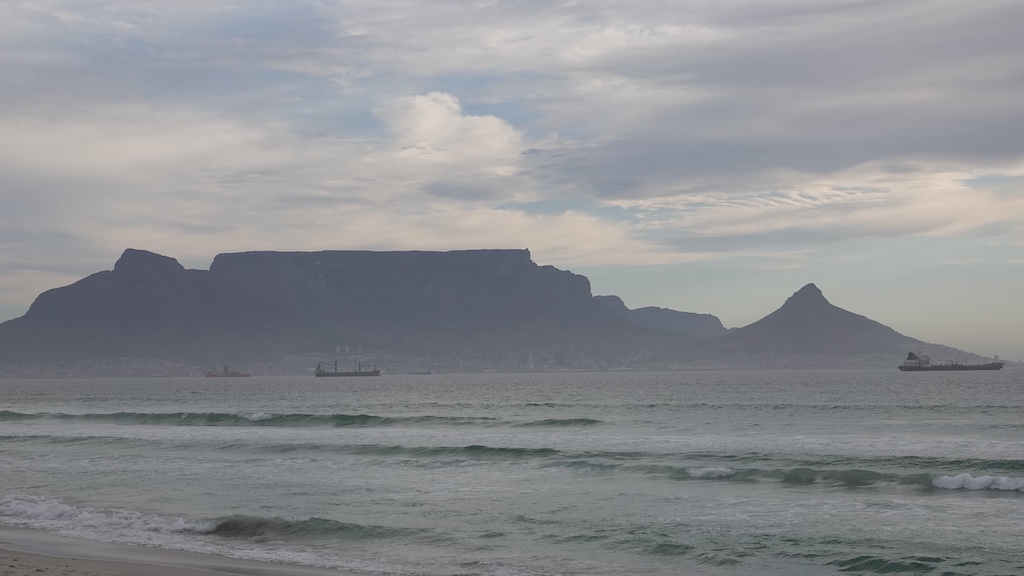
Maritime traffic around the Cape of Good Hope has increased by 84% since 2023 due to political instability in the Horn of Africa. The increase in ship traffic, though good for business, is contributing to the decline in marine bio-diversity because of the noise and pollution it brings. Photo: John Grobler
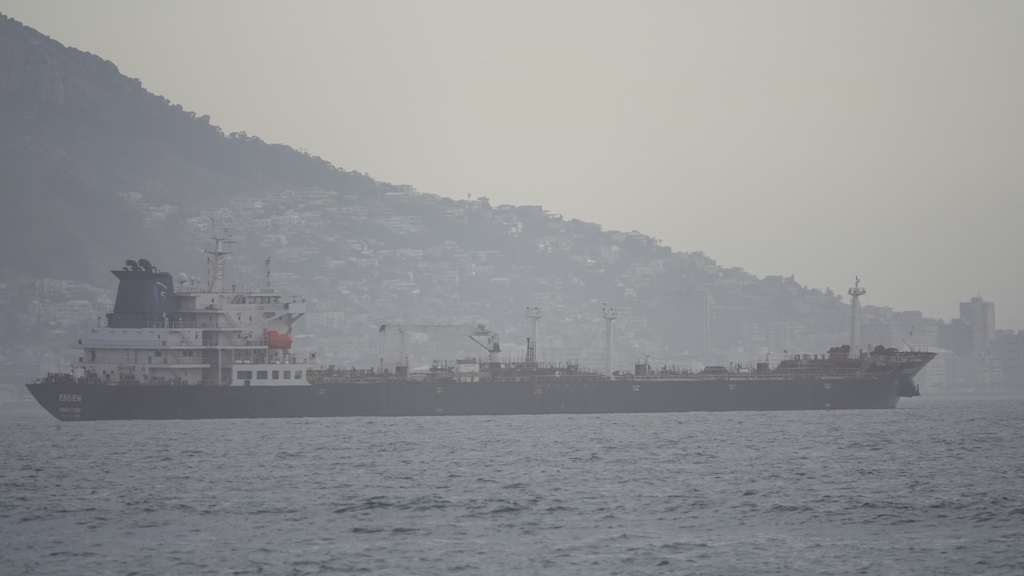
A sharp increase in ship-to-ship bunkering has been flagged as a major source of unreported oil spills along the West Coast, with industry sources saying that only 1 percent of such incidents are typically reported to the authorities. Most of these transfers are for the trans-shipment of petrol and diesel, which dissipates quickly on the surface but is hugely damaging to the marine environment. Photograph for illustrative purposes only, there is no evidence this ship was guilty of pollution. Photo by John Grobler
Well drilling
Drilling wells at depths in excess of 3,600m in the rough Atlantic seas of the Orange Basin poses an unacceptable level of risk, said Neville van Rooy, outreach programme head at civil society group The Green Connection.
Even if the OSRL was ready to deal with any oil-drilling accident, industry critics worry that a spill could cause massive environmental damage along the entire southern Atlantic coastlines of South Africa and Namibia before it could be contained.
Australian-based environmental assessment specialists SLR, which is managing the environmental and social impact assessment studies for Shell and TotalEnergies, said their modelling suggested that any spill from an ultra-deep oil block – typically located 250km to 350km offshore – would see the prevailing, strong southerly winds and fast-flowing Benguela Current disperse any oil plume long before it reaches the coastline.
However, this concern is moot for the moment after the Cape High Court ruled earlier this year that the environmental clearance certificate issued to Shell and TotalEnergies for exploration in Block 5/6/7, located closer inshore on the continental shelf off Saldanha Bay, was invalid because of insufficient consultation with local communities.
With a similar application now launched in respect of Shell’s Deep-Water Orange Basin ultra-deep oil block (NCUD13), Shell has postponed its seismic exploration to 2026 and instead is conducting “good neighbour understanding” workshops at Port Nolloth, Hondeklipbaai and Doringbaai.
“Everything [in terms of physical exploration activities] has come to a halt for now because of the interdict and the other pending court case,” said veteran ecologist Liziwe McDaid, lead campaigner of The Green Connection, which spearheaded the Cape High Court applications.
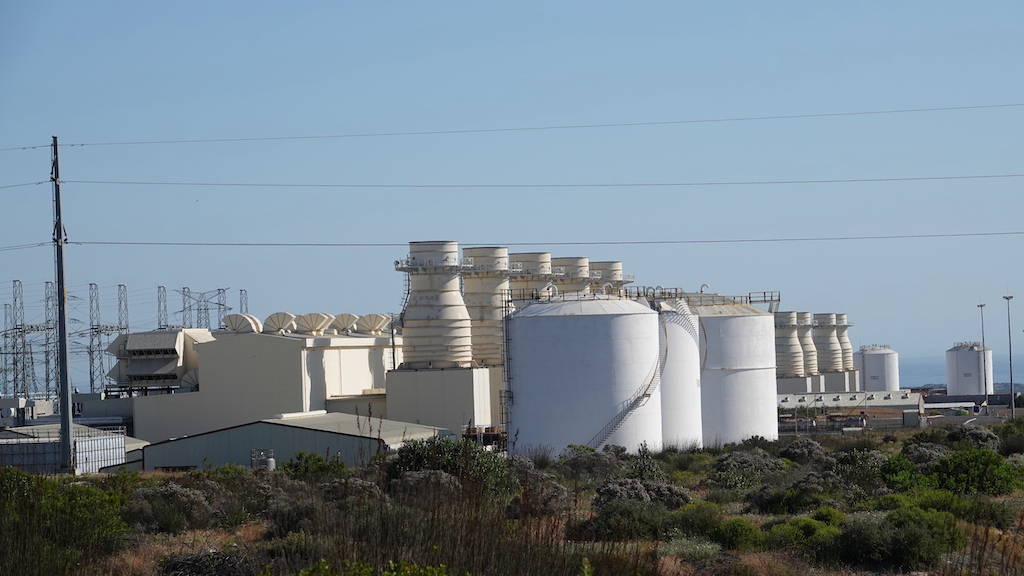
A captive market to feed expensive white elephants? Eskom’s Ankerlig open cycle gas turbine plant at Atlantis and the Gourikwa plant in Mossel Bay are expected to remain in service until the 2040s as so-called peaker plants to stabilise the Western Cape’s electricity grid during peak demand periods…
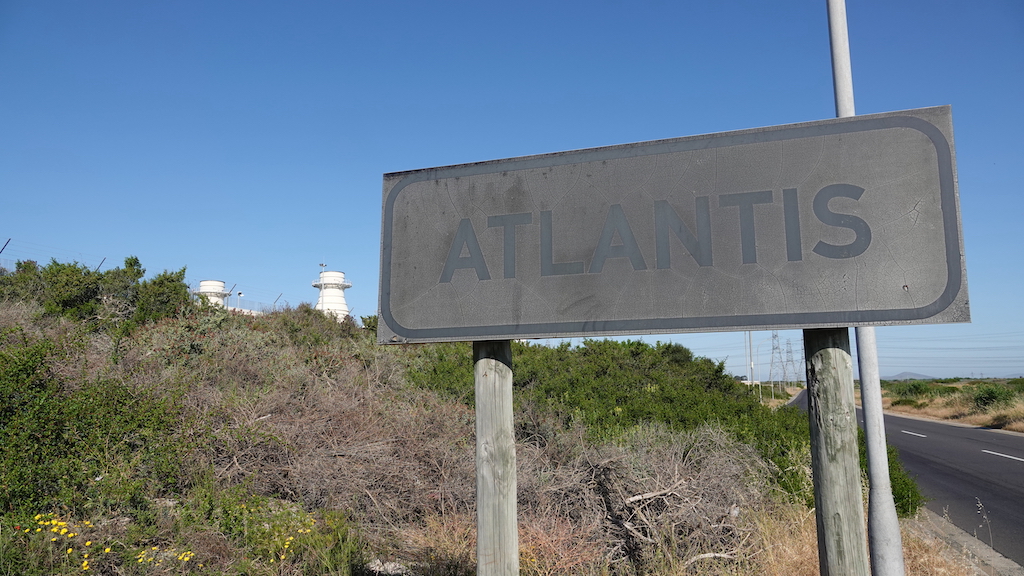
.. That makes the Western Cape a captive market on which the cost of expanding the use of gas could be imposed in the form of much higher electricity tariffs. Photos: John Grobler
Natural gas
Did this mean the environmental lobby could declare victory over the fossil fuel industry, especially after Kgosientsho Ramokgopa, South Africa’s Minister of Electricity and Energy, announced on October 19 that the country was moving away from coal and instead was expecting an increase in solar plants to generate an additional 25,000MW of electricity?
Not so, said McDaid, the devil lies always in the details. While South Africa intends not to increase the use of coal for generating electricity under the updated 2025 Integrated Resource Plan (IRP), Ramokgopa’s new policy plans to expand the use of natural gas in the energy mix by 50% – to 6,000MW by 2030, growing to 16,000 MW by 2039.
This effectively creates an artificial and continued demand for gas at Eskom’s two largest open cycle gas turbine plants, Ankerlig in Atlantis and Gourikwa in Mossel Bay, that are burning up to 2,000 litres of diesel an hour each when used to stabilise the Western Cape’s electrical grid during peak demand periods.
Eskom currently is planning to shut down its two other, smaller gas turbine plants – Acacia in Goodwood and Port Rex in East London – by next year, while Ankerlig and Gourikwa are to be converted to using gas instead of diesel and to remain in use until 2040, according to to the IRP 2025’s strategic objectives.
But at a maximum combined peak output of only 2,400MW, Ankerlig and Gourikwa fall well short of the IRP’s targets of 6,000MW by 2030 and 16,000MW by 2039, suggesting that the difference would come from new, privately owned gas turbine power-plants.
A built-in institutional demand for gas arguably makes developing the gas resources of the Orange Basin and the Outeniqua Basin off the south coast attractive to foreign investors looking to become involved in South Africa’s electricity market as suppliers of feedstock, McDaid surmised.
“The question I have, is who is going to benefit? Where is the real industrial demand for gas, apart from supplying Eskom’s expensive power plants?” she asked.
John Grobler is a Namibia-based associate at Oxpeckers Investigative Environmental Journalism. This is the third in a series of #PowerTracker transnational investigations that interrogate the environmental, socio-economic and political impacts that the Orange Basin Corridor oil and gas developments could potentially bring.
